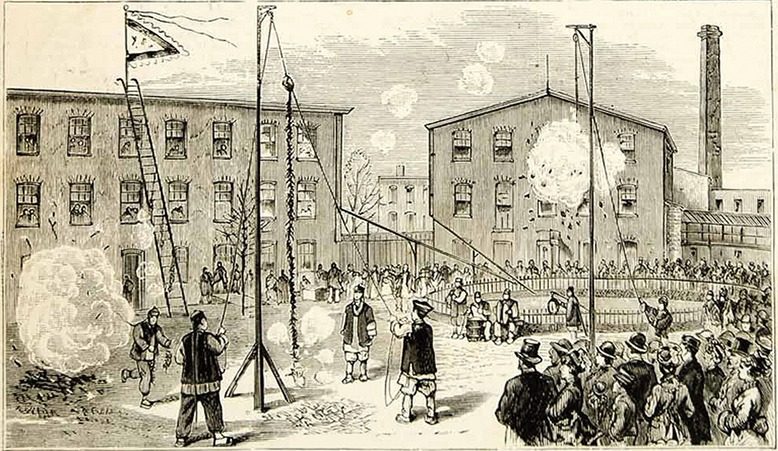
In the late 1800s, after Chinese laborers helped to complete the Transcontinental Railroad in California, strong anti-Asian sentiment led angry mobs to burn down Chinatowns in California and attack Chinese men and boys.
Some of those who were trying to escape the violence of the West headed—improbably—to Belleville, a small town in northeastern New Jersey. It became a sanctuary for this embattled group of immigrants and, eventually, the site of the first successful Chinese community on the East Coast.
Chinese laborers were invited to come to Belleville to work for the Passaic Steam Laundry. The workers were looking for new opportunities that would allow them to move East and escape the discrimination they faced in the West.
In 1870, 68 Chinese men and boys arrived in the town to work for the laundry shop at the invitation of Captain James Hervey, a retired sea captain. The Chinese people were overwhelmingly accepted by the locals in Belleville. They decided to settle there, creating the first Chinese community on the East Coast.
A few months later, in 1871, the men celebrated the Chinese New Year in Belleville—making it the first celebration of its kind on the East Coast. In later years, Chinese people from nearby towns would travel to Belleville to celebrate the holiday, as it wasn’t permitted to be held in New York City at the time.
[RELATED: Asian Americans in NJ Face ‘Watershed Moment’ Ahead of School Curriculum Change]
The first Chinese school in town later opened, and the community there eventually grew to around 300 people—about 10 percent of the town’s population.
Later, many of Belleville’s Asian residents migrated to Newark and New York City, which eventually became the largest Chinese community on the East Coast.
Many of the early Chinese workers that lived in Belleville were buried under the Dutch Reformed Church in town (now called Iglesia La Senda Antigua). A monument was later erected in the cemetery outside the church to honor the contributions these Chinese immigrants made.
Now the town, which has about 35,000 residents, is about 10 percent Asian American, says Belleville Mayor Michael Melham.
In February, Belleville celebrated the 151st anniversary of its first Chinese New Year celebration with a virtual display of fireworks that lit up the sky over its town hall to usher in the Year of the Tiger. Melham says he plans to continue this tradition and will work to highlight the town’s great history.



